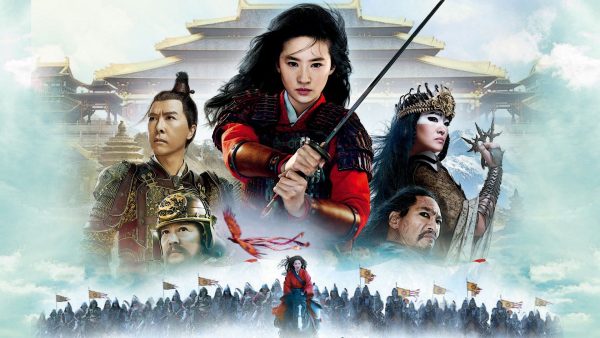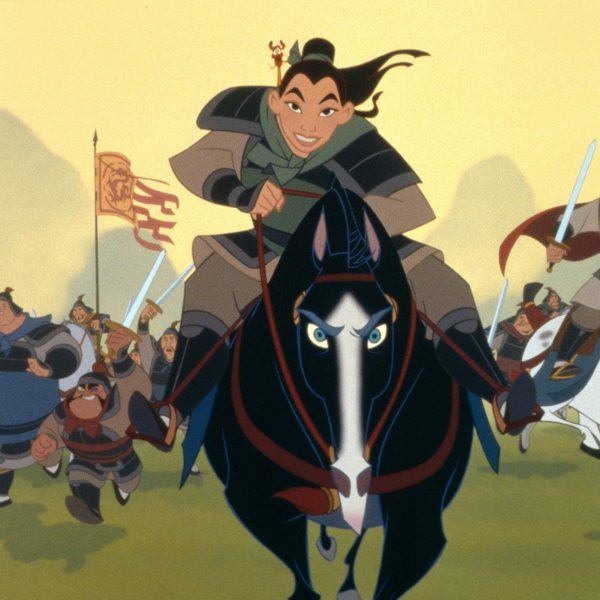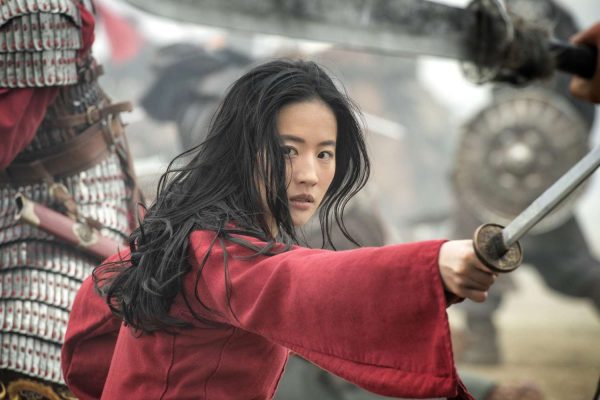
Image Credits: The Walt Disney Company
In March 2020, Disney had its world premiere of the live-action movie “Mulan” based on the animated version made in 1998. Many people were anticipating the release of the movie as they were looking forward to their beloved characters reappearing on the big screen. “Mulan” was a re-adaptation that was anticipated especially by Disney fans, as she was the first Disney princess to be of Asian descent and embrace her own identity by breaking gender roles. However, as the movie slowly revealed teasers during the pandemic, many of the original viewers became disappointed due to the deviation from the original and the action sequences. The live-action even had a $150 million loss worldwide due to a decrease in interest in live-action, the effect of the pandemic, and the several controversies surrounding the movie.
So what led to the downfall of the live-action “Mulan” compared to the other Disney adaptations?
For many, the story of Mulan is a story about facing adversity, taking on responsibilities that are not your own, and having courage and determination. It was a tale made by mortals, emphasizing the fact that there was no need for supernatural forces or spells to help Mulan fight her battles, only her wit and knowledge. The tale of Mulan was about saving her father and her country, and portrays the value of filial piety and bringing honor to your family.
“My father has no grown-up son who can to battle race.
阿爺無大兒,木蘭無長兄。
Once buying horse and saddle are done,
願為市鞍馬
I’ll take my father’s place.”
從此替爺征
The story of Mulan was based on the ancient Chinese poem known as “The Ballad of Mulan” written in Northern Wei Dynasty around the time of 386 to 548 AD. The poem describes the tale of a young girl named Mulan who enlists in the military in place of her ill-ridden father as she has no older brother to take her place. The kind-hearted Mulan, despite never having learned a single thing about battle, is willing to take her father’s place so that he may be able to rest and take care of himself. She disguises herself as a male and is able to keep up her disguise for twelve more years until the war is over. At this point, none of her allies are aware of her gender and know her only as a strong warrior in battle. Upon returning from the war, she is given a prominent position —which she refuses, only requesting that she be reunited with her family. It is only when she reunites with her family that her comrades realize she was a female all along. The poem ends, “When a pair of rabbits run side by side, who can distinguish male from female?” These closing lines emphasize the fact that despite Mulan being a female, when in battle, there is no way to tell her gender—she is a warrior first and a female second.

Taking inspiration from the ballad, the original Disney “Mulan” (1998) was written in a similar way but reworked into 2D animation. In the Disney version, young Mulan urges her disabled father not to go into battle—despite being the only male in the household —and instead takes his place in the war. While she is hesitant about fighting, she knows that she has to do it for her father’s sake. Thus, she impersonates a male and chooses to fight. While there are small changes in the movie to emphasize drama (e.g. the musical numbers, the talking dragon), most of what was originally written in the ballad stayed true in the Disney version, including the messages of inspiring others to break gender stereotypes, the importance of filial piety, and the importance of knowledge and strategy.
What was so different about the live-action adaptation of “Mulan,” however, was not what they chose to take out, but what messages and values they chose to include.
Unlike its animated predecessor, there is a removal of the familiar music, the fantastical creatures, and the romance. In the live-action, we follow the story of Hua Mulan, who — at the displeasure of her parents — is adventurous and ambitious. Her parents hope that she will someday be able to be a good wife to her husband and that she will try to be more ladylike. When an imperial army invades the North, it becomes evident that it is required for every household to contribute one man to fight Khan’s forces. Mulan, realizing that her crippled father cannot go, takes his place. Although the plot seems to be quite the same as the ballad and the Disney animated film, there are details that prevent the film from being as good as it could be and even undermine the original messages.

Image credits: The Walt Disney Company
The first thing that the live-action film failed to portray was Mulan’s greatest weakness as physical, not emotional. The original Disney film had shown that there were physical and mental demands of fighting in a man’s war and that Mulan needed to persevere if she truly wanted to be able to bring honor to her family, especially in regard to her size and prior training. In one particular scene during “I’ll Make A Man Out Of You” she needed to be strategic and learn to get past the obstacles placed in front of her. Through Mulan, the Chinese ideals of feminine fragility and weakness were portrayed as something that could be defied, and strategy and warrior strength were what should be valued in battle.
In contrast, the live-action “Mulan” chose to emphasize her ‘warrior strength,’ and made her weakness a mental obstacle. In the movie, there is the concept of “chi” which is a supernatural balance and strength that only men are supposed to have. The live-action establishes that Mulan had too much chi for a girl and while Mulan is talented in martial arts, her father refuses to teach her — telling her to shun her chi. When Mulan faces her obstacles on the battlefield, instead of using her intellect, she draws on her inner chi to support her—making this chi what makes her formidable as an opponent and not her individual skills as a warrior. While the live-action does use her wits in the film through trickery and manipulation of territory, ultimately, Mulan fought her battles through magic and supernatural elements.
Another difference between the two films is that while the original Disney “Mulan” had drawn attention to Mulan’s love for her family and her motivation to bring honor to them, the adaptation instead focused on women’s empowerment and parallels between Mulan and the film’s new antagonist, Xianning. Like Mulan, she possessed high amounts of chi, but in contrast, her chi is unbalanced—allowing her to have great powers such as shapeshifting. In traditional Chinese values, however, chi is defined as the life force or energy that runs through all beings and is not something that gives magical powers to a person. As a result, this creates misconceptions about chi, which the film portrays to be of great importance to Mulan.

The reason why Xianning was even added to the film was stated by producer Jason T. Reed as:“We thought it would be interesting to add another female character.” This additional character, averted the viewer’s attention of the message of filial piety and her bringing glory to her family to a focus on women’s empowerment. It was stated by the director of the live-action, Niki Caro, that “In many ways, ‘Mulan’ is a newer version of what a strong female looks like” and as a result, by adding this new character, there would be a supposedly better version of what an empowered female should look like. This shifted the focus of the story’s conflict and brought a discordant change to “Mulan.” Xianning’s character wasn’t necessary for this film, as “Mulan” was focused on fulfilling your duties to your family, regardless of gender. Throughout the live-action, Xianning is even seen tempting Mulan to give in to evil and to fight alongside her. As it was Mulan’s devotion to her family that motivated her to fight in the war, by taking the focus away from that, the live-action version lessens the original message of the ballad and the original animated film and even attempts to create a new definition of female empowerment. The definition is that independence is what empowers Mulan and not her loyalty to her family and her values—which directly changes the entire message that the original was trying to convey.
The final difference between the two films is that there is no focus on Mulan embracing herself and her skills, but rather, there is attention placed on how she was this independent, empowered, woman—a modernized version of what a strong female should be like. Throughout the original animated film, there was a heavy emphasis on Mulan’s frustration with her needing to abide by the patriarchal role of a housewife. It was even explicitly stated in the song “Bring Honor To Us All” with the women surrounding Mulan explaining to her how a woman was supposed to fulfill her role in society and serve the people.
“We all must serve our Emperor
who guards us at the Huns
A man by bearing arms
A girl by bearing sons.”
The lyrics themselves demonstrate how during the Northern Wei Dynasty, the primary role for a woman is to bear sons—leading to women being of less importance compared to men. As Mulan’s inner self is conflicted with wanting to bring honor to her family but also to honor herself as a person, when her father is called to war, she chooses to run from the patriarchal society and to stand in his place. When she returns from the war, Mulan has already learned that her own individual skills are of value regardless of her gender and that she has embraced herself for who she is. However, the live-action portrayed this frustration of Mulan being only a nuisance and that she didn’t necessarily need to embrace her true self as it was only essential for her chi to be accepted by her father. With the removal of the songs, a portion of the movie was given to battle scenes and stunts—featuring Mulan with her wavy locks intact and her porcelain face in full view. In the live action, Mulan is not conflicted with her role as a female in society and is rather what modern society would view as “strong.”
“The flowers that bloom in adversity are the rare and most beautiful of all.” – Mulan (1998)
The removal or adaptation of messages in the original “Mulan,” highlights how adaptations can lose important messages or morals. As society begins to change and evolve, there are those who believe that certain ideas and views are outdated and need to be changed. However, there are also some who believe that upholding these traditional values are important and that these changes made in the film are just as important. With Disney’s live actions, instead of redefining the messages and values of the originals, it is crucial that the original heart and character of the films are not erased or replaced for something else, holding onto traditional values, but evolving or adapting them into something new and inspiring.




















































